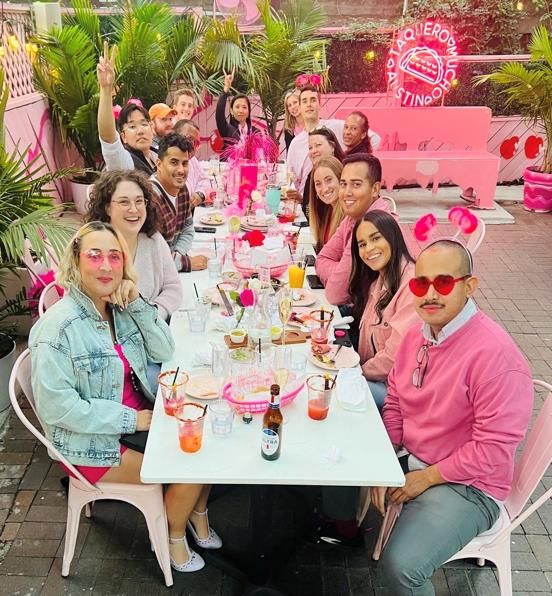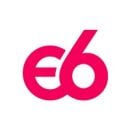The office landscape began to change in the early 2000s.
Macbooks replaced Xerox machines. The walls of the cubicles came down. Design-forward aesthetics colored conference rooms and lobbies, and lunch-filled fridges gave way to fully stocked kitchens and cafeterias. What started out as makeshift, cost-cutting workplace measures for early tech startups — communal desks, ragtag decorations and DIY meeting spaces — turned into the perk-filled campuses of the modern tech office.
Now, at the turn of a new decade defined by the pandemic, attrition and autonomy are shifting the gears of work trends once more. The opulence and amenity-lined facilities of tech giants can no longer keep employees onsite five days a week, as they’ve grown accustomed to the convenient refuges and blurred boundaries of remote work.
As many tech employees call for the flexibility to choose how and where they work best, hybrid work has become the mantra for HR innovation.
In Austin, three companies have embraced the writing on the wall. For their people-focused teams, intentional effort and keeping a pulse on work trends help transcend transitional pains. “We focus on feedback and flexibility,” said Angie Nelson, a recruiter at QuotaPath. “We know that life happens and things change quickly.”
Even after introducing a hybrid model, companies like AWL are constantly iterating HR processes to better suit shifting employee needs. To bring its pandemic-era adaptation into the operational fold, the team grants two sets of equipment for both in-office and at-home use, as well as tailors onboarding to hybrid and remote employees.
To handle a distributed staff, HR experimentation with hybrid work also ensures that culture can scale across customized working styles and geographic diversity. The flexibility allowed employees at Episode Six, for example, has gone a long way to promoting personal and social well-being. “With today’s technology, an employee in Austin can feel as close to a remote colleague in Japan as the one sitting next to them,” said Summer Tatlici, the company’s VP of people and culture.
Innovation in the HR space isn’t one often brought up in the tech industry, but both recent and historic events have shown its increasing importance. To see teams that are thriving in the pivot to a new hybrid culture, Built In Austin sat down with three companies for a look at their people-forward office plan.

AWL is an insurance platform that aims to connect consumers with insurance agents to best address their product needs. With a host of insurance categories, the company’s flexible offerings reflect its internal policy on giving employees a choice on how they work best. Its hybrid model ensures that both in-person and remote options are viable ways to collaborate and connect with colleagues.
Briefly describe your company’s hybrid model. For example, how often are employees expected to come into the office?
AWL is split up into two groups — those who work 100 percent remotely, and those who work hybrid. Of the hybrid employees, the majority of them come into the office once a week on Tuesdays. The office is open for anyone to come in and work though. If someone’s internet goes out at their house, they are more than welcome to come work from the office.
When a team decides they want to collaborate in person, they schedule a time to come into the office and maybe go out for dinner afterwards. Additionally, we host lunch and learns. Someone from leadership will pick a topic to discuss and the entire company is invited to attend — we get great turnout for these.
Our hybrid work model has changed drastically over the past two years.”
What makes your hybrid work model particularly unique or successful?
The administration team ensures being at the office is enjoyable for everyone. We have breakfast available every Tuesday morning, and one Tuesday a month we plan an event. In September we threw an Oktoberfest party, in October we had a chili cook-off, and November 1 this year we celebrated Halloween. We try to encourage employee engagement by having contests and giving away prizes — AWLers have winning attitudes.
Furthermore, every desk is set up with the same technology we issue to those who work the hybrid model. All someone needs to work at the office is their laptop and they can just plug in and go. All of our conference rooms are outfitted with whiteboards to stimulate collaboration, and we have tools for hybrid meetings.
How has your hybrid work model evolved over time?
Our hybrid work model has changed drastically over the past two years. In 2020 nearly everyone worked solely from home, so they just took their office technology home with them. Now, they have two sets of equipment — one for home and one for the office. We implemented a new asset tracking system to streamline the distribution of equipment. It also helps with upgrading an employee to a new laptop with less back-and-forth between the employee, our admin team, and our IT vendor, which results in quicker, more seamless deployment.
In addition, we have enhanced our onboarding process to take into account hybrid and remote employees. With the introduction of new HRIS software such as GoCo and workflow software such as Process St, our new employees can complete all onboarding tasks virtually and smoothly. Our onboarding team is then able to efficiently track the completion of these tasks and ensure every employee is well prepared for their first day. We are also hosting in-office events again

Episode Six is a digital payment platform that enables brands and financial institutions to transfer value and manage ledgers easily through the cloud. The global company’s payment technology empowers its clients to meet their customers’ needs. With such an expansive, multinational reach, Episode Six’s employees are also distributed widely, necessitating a degree of flexibility that a hybrid model would naturally accommodate.
Briefly describe your company’s hybrid model. For example, how often are employees expected to come into the office?
The flexibility now offered through hybrid working models is proving beneficial to many employees, and the same can be said here at Episode Six. The majority of our employees work both from home and in the office, allowing them to achieve more purpose, productivity, agility and flexibility in their work and personal lives. At E6, we offer a true hybrid option for our people. Some E6ers come into the office daily, while others come once a week, once a month or even just for an afternoon. Each of our managers creates a schedule that works best for their team. Ultimately, we’ve found that this hybrid model is the perfect blend of remote and in-person work for our company.
We have been adaptable to the ever-changing environment around us, and we remained focused on a model that is flexible and inclusive.”
What makes your hybrid work model particularly unique or successful?
Through our hybrid work model, our employees can be more flexible and adaptable while maintaining the personal connection that comes with working side-by-side. Our company recognizes the importance of connecting people to achieve great things. Since our inception, we have thrived as a global provider of cutting-edge payments technology by developing our employees’ skills and encouraging cross-team collaborations, all while providing a place to nurture team camaraderie.
We provide our employees with office space and give them the option to come into the office if they wish. We also provide daily breakfast, coffee and afternoon snacks for them. To make the workday more enjoyable, we also hold weekly office lunches and host offsite events. We have found that people want more flexibility, and our hybrid model offers the benefits of working together in-person with the flexibility to balance work and well-being at the same time.
How has your hybrid work model evolved over time?
We have been adaptable to the ever-changing environment around us, and we remained focused on a model that is flexible and inclusive. All of our employees receive the training and tools they need, whether they are working remotely or in the office. With patience and adaptability, we have also learned how to create engagement in a hybrid environment.
With today’s technology, an employee in Austin can feel as close to their colleague in Japan as the one sitting next to them in Austin. We’ve brought our people closer together worldwide, and a flexible approach to hybrid work is part of that. Besides providing managers and employees with more options in their working environment, we have also found that innovation plays a vital role in the success of our teams. We’re fostering a spirit of innovation as we redefine what is possible in the payments industry, working in more agile ways to drive efficiency and deliver change
QuotaPath is a compensation solution platform for sales reps that helps them generate plans, forecasts and insights while eliminating inefficient data entry. Internally, flexibility has been key since the company launched. With a distributed workforce in multiple locations, QuotaPath has continued its priority for remote work by offering a hybrid work model to empower its employees.
Briefly describe your company’s hybrid model. For example, how often are employees expected to come into the office?
Our expectations vary, and leaders can decide based on the role. We’re distributed across two office spaces, eight states and Canada. In Austin, Tuesdays and Wednesdays our growth teams are in the office working together plus one additional day of their choice. The other days are flexible based on the individual’s preferences. We also surveyed them on how many days a week felt right for them. Other teams have more flexibility and folks can decide what works best for them.
We share our headquarters between our Austin and Philly offices, so you can choose to work from the office a few days per week or connect with the team once a month or once a quarter in person through special meetings or social events. If you’re located in the United States or Canada, you can work remotely from home and are invited to travel for company-wide events like kickoffs or departmental offsites.
We operate under the idea that things such as remote work will continue to evolve as our team does.”
What makes your hybrid work model particularly unique or successful?
We focus on feedback and flexibility. We know that life happens and things change quickly. While considering options for our return to office, we surveyed the team on their preferences. We evaluated different models to make sure there was flexibility in each version to ensure everyone is able to find something that helps them work best.
In addition, we approach most of our meetings with a remote-first mentality. Each week, we have two company-wide meetings. At our start of the week, we talk about goals and how we are tracking. Then on Fridays, we share shoutouts and wins of the week by highlighting individuals who made a big impact. We create all non-location specific events to be inclusive to all employees, including our holiday gift exchange and cross-departmental book club.
For Halloween, we sent out cookie decorating kits to everyone and hopped on a Zoom with music and virtual polls. Then we shared photos of our cookies in a company-wide Slack channel.
How has your hybrid work model evolved over time?
We’ve had remote employees since we launched in 2018. In 2020, we went entirely remote to focus on the safety of our team before reopening our offices in 2021. We surveyed the team and asked how they would work best.
Based on that feedback, we now have opportunities to collaborate remotely, in office on a regular basis or through ad-hoc meetings and offsites with our teams, with countless variations of anywhere and everywhere in between. Just like everything with QuotaPath, we operate under the idea that things such as remote work will continue to evolve as our team does.









